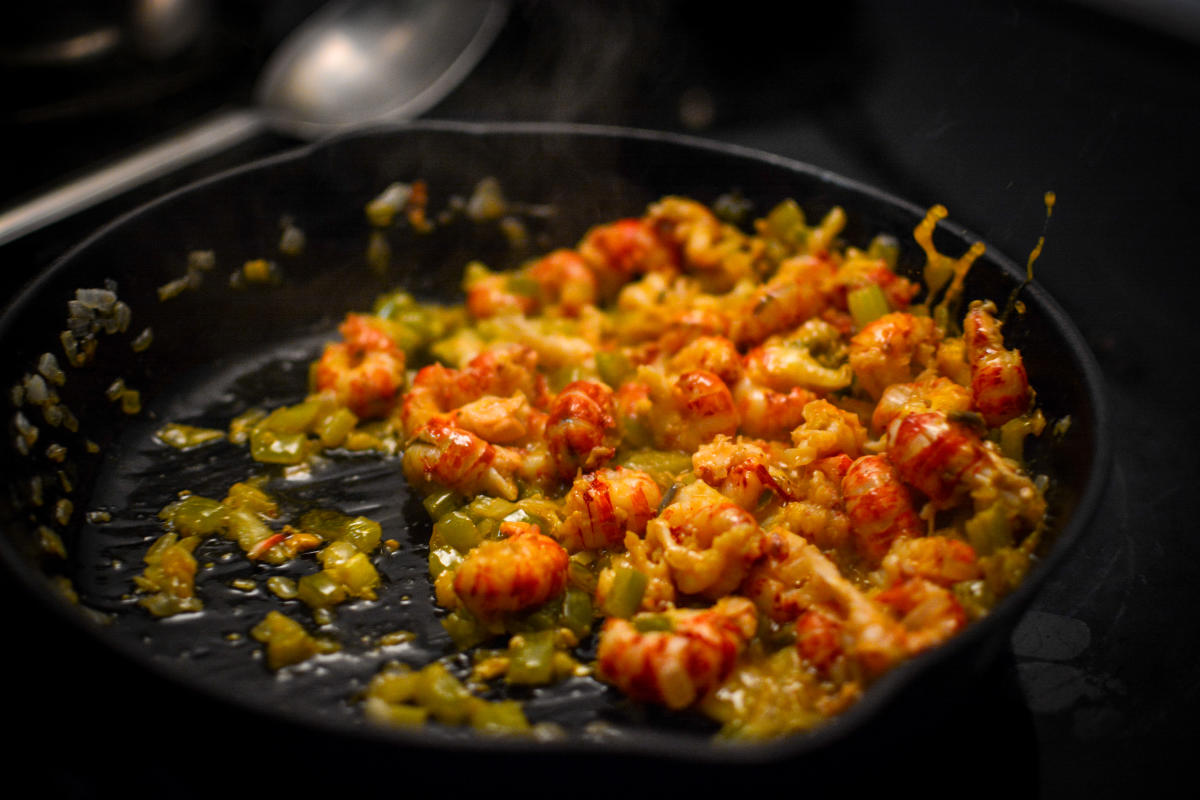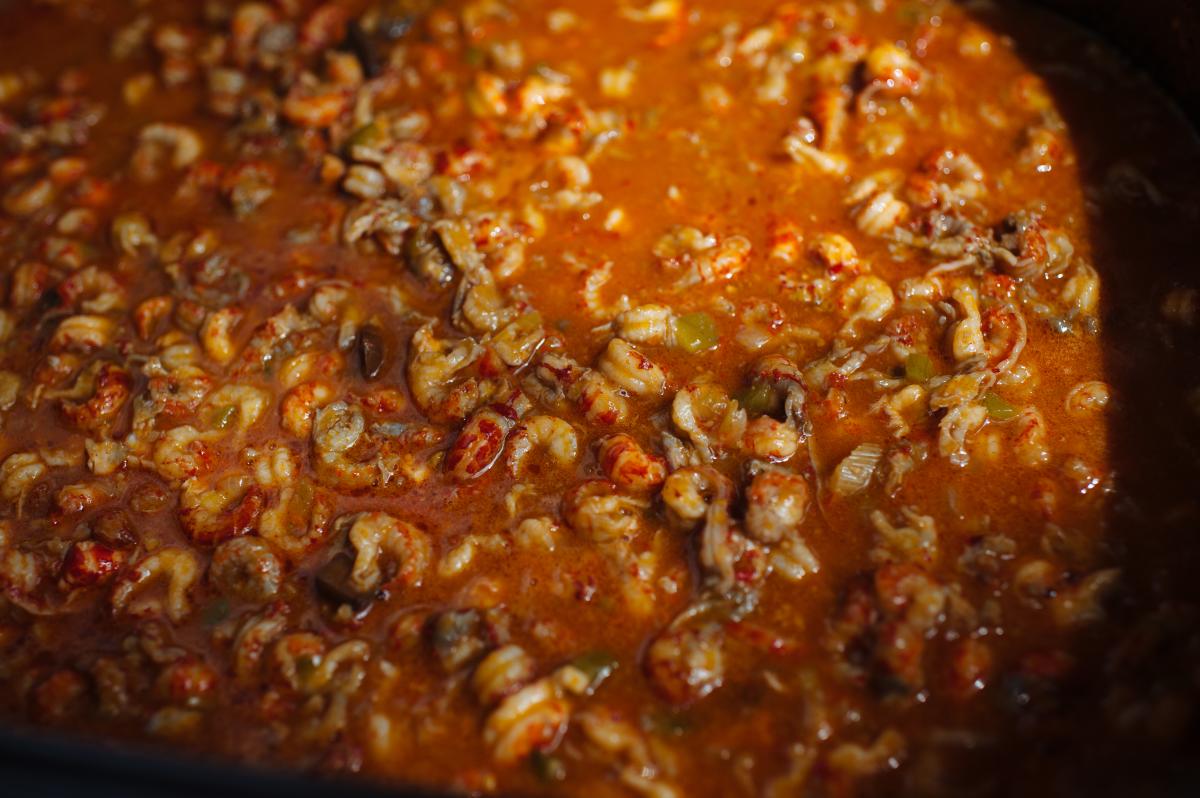Dickie Breaux has probably told the story a thousand times. But with each retelling there remains something mysterious about the origin of crawfish étouffée. As a Breaux Bridge culinary legend, and owner of storied Cajun restaurant Café Des Amis, he’s often called upon as a keeper of crawfish lore. It’s tough to be an expert on something carried on almost purely by oral tradition, especially when that oral tradition has been copied erroneously thousands upon thousands of times like a decades-long game of recipe “telephone”.

Crawfish étouffée doesn’t come from a recipe in the way other folk staples like biscuits or shepherd’s pie do. It’s a description of a method of preparation, like roasted pork or barbecued chicken. Étouffée, translated from French, means “smothered”, and listening to Dickie walk through his signature tale for the thousandth time you get the sense that’s all there is to it. Crawfish étouffée is just crawfish that has been smothered rather than grilled, fried, braised, poached, or baked. It could just as soon be shrimp or catfish.

But smothered, in this sense, means smothered in the fashion of Cajun cooks, in particular Aline Champagne, niece of Mulate Guidry of Mulate’s Cajun Restaurant fame, and possibly the only consistent apparition in the legend. That original smothering, according to Breaux, was a simple and rich one made with crawfish tails, butter, onions, bell pepper, and crawfish “fat”. The fat, which is actually liver and not technically fat, is the ambrosia of mythological Cajun cooking. Its succulence is the allure of crawfish meat itself, and is the primary ingredient missing in most contemporary recipes. Grocery stores sold it in abundance in the early 20th century until its commercial sale was outlawed by mid-century, but those patient enough to peel their own tails can still reap the benefits.

As Mr. Breaux’s legend goes, Aline ran the Rendezvous Restaurant on the Henderson highway outside of Breaux Bridge and served a wide selection of Cajun favorites, most notably those featuring crawfish. In the 1940s, crawfish weren’t widely eaten publicly, though in Breaux Bridge, later to be called the “Crawfish Capital of the World”, it was a daily staple while in season. Martin Begnaud, a banker from Lafayette, followed his nose through the swinging saloon doors into Aline’s kitchen and asked her what she was doing. “Mais, justement étouffée mes ecrivisses,” she replied. Or in English, “I am simply smothering my crawfish tails.” Mr. Begnaud tried the dish, loved it, and returned the following week with ten of his employees, each ordering crawfish étouffée. The rest, as has been said a thousand times, is history.

As time has rolled on the story has gotten more varied in the telling, and the dish more complex in the making. Some say Aline inherited her technique from crawfish courtbouillon (a tomato based seafood stew) made at the nearby Hebert Hotel in the 1920s, and adapted it to her needs and means. Today, restaurant and home étouffées only hover around the original four ingredient “recipes”, perhaps striving to make up for the difficult to obtain crawfish fat. Some include heavy creams, others Creole-ify it with tomatoes, and overall the finish is thicker and more stew-like than the original. Still, crawfish étouffée owns a place as one of the most iconic dishes in Louisiana food lore. And like its cousins, its legend is only growing.
